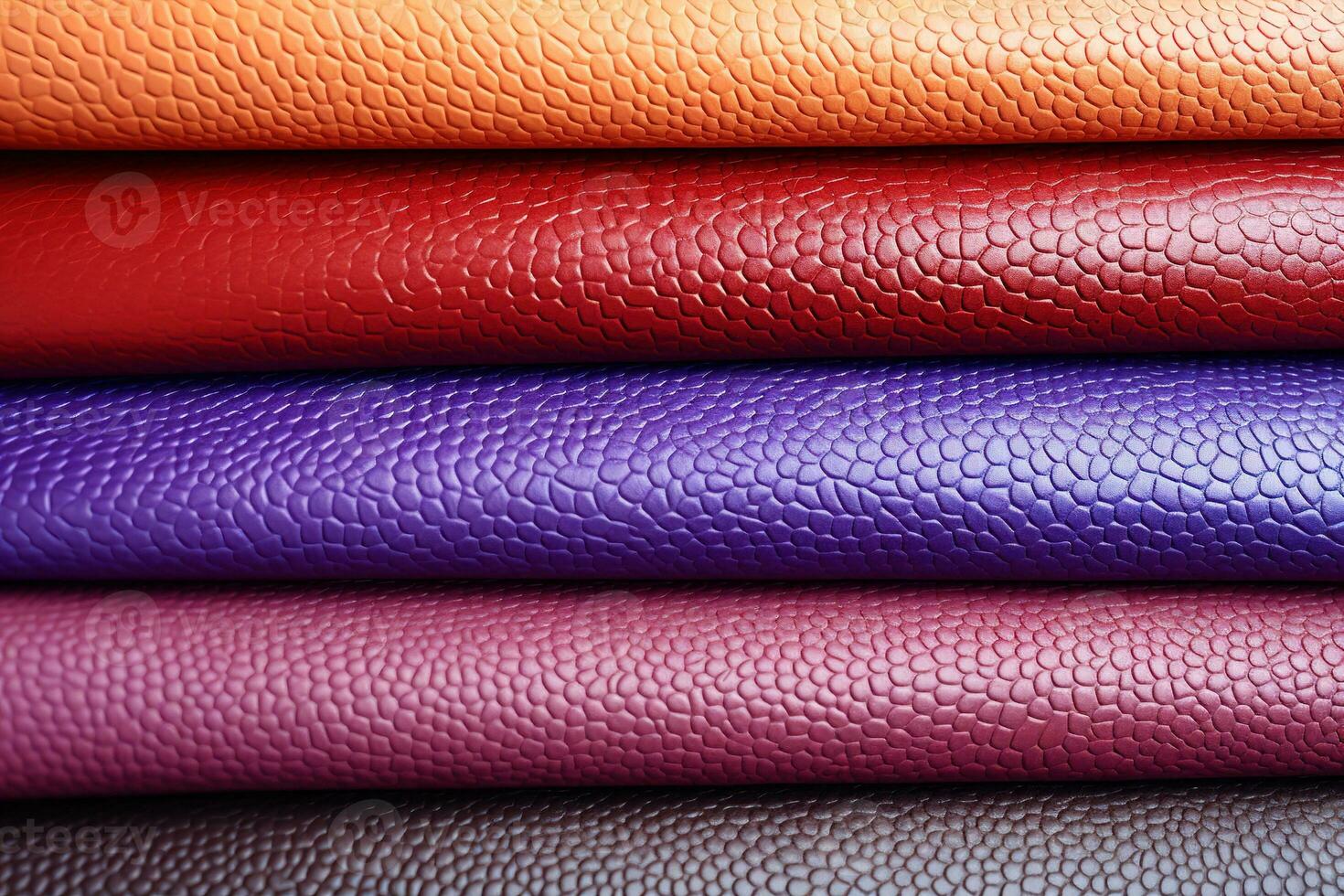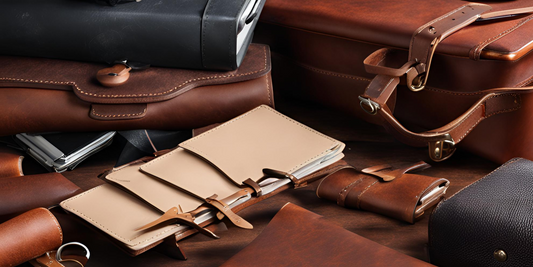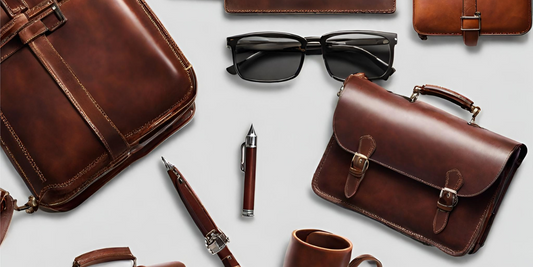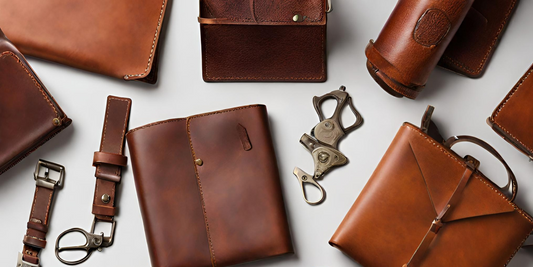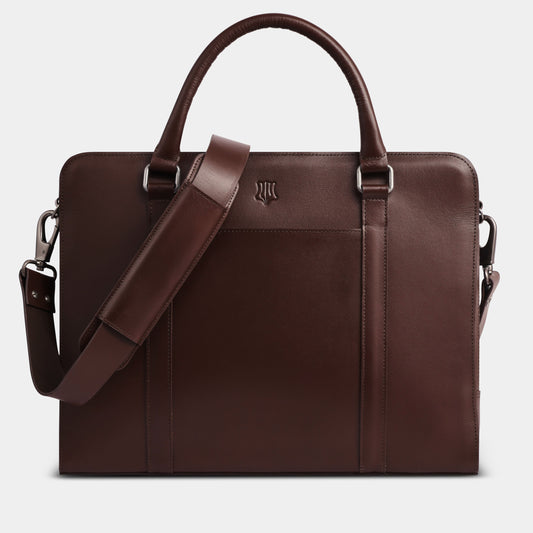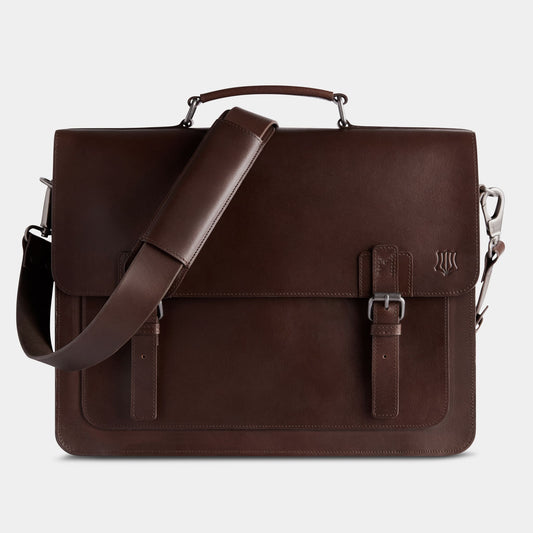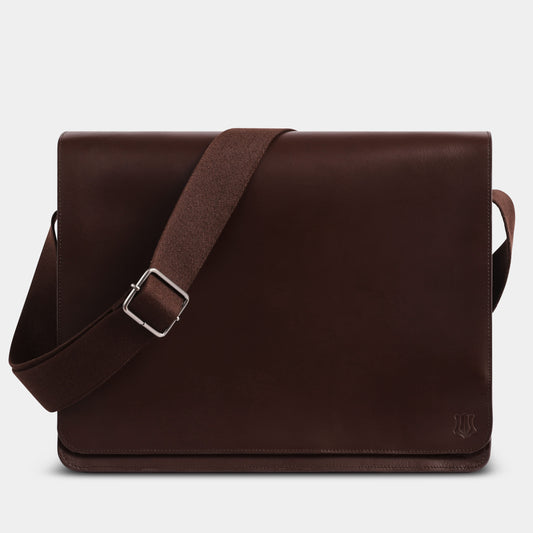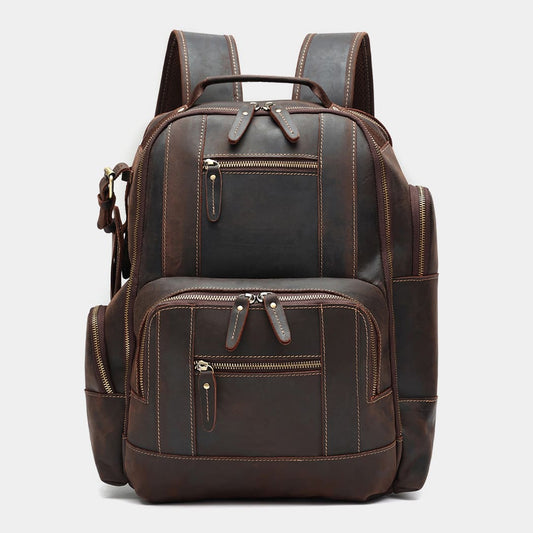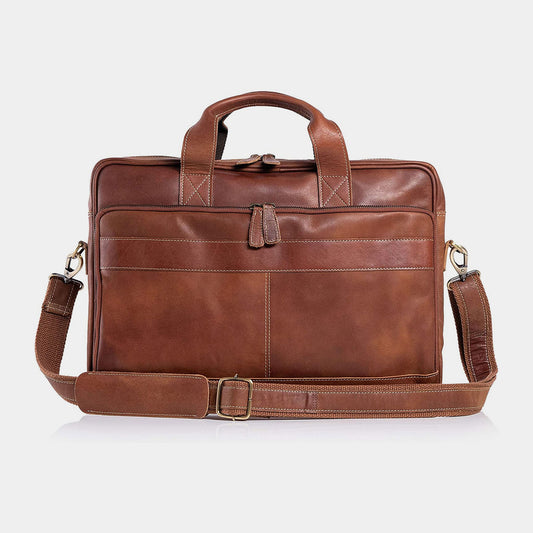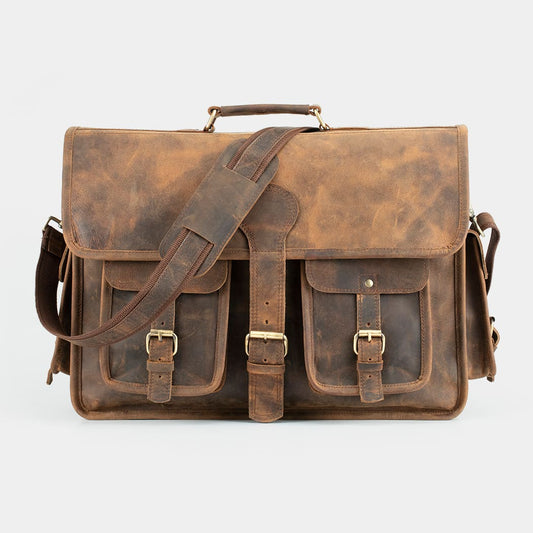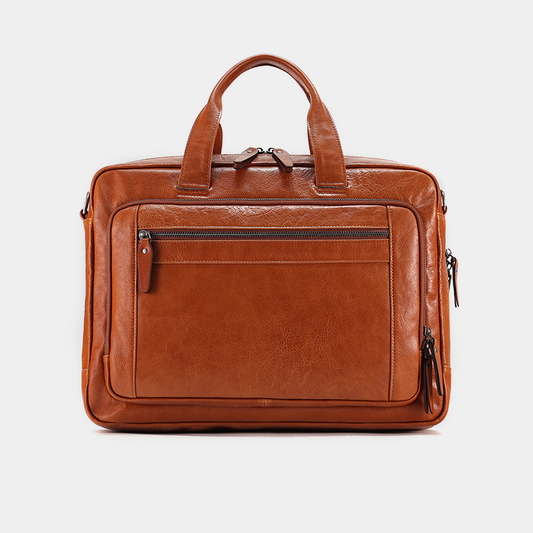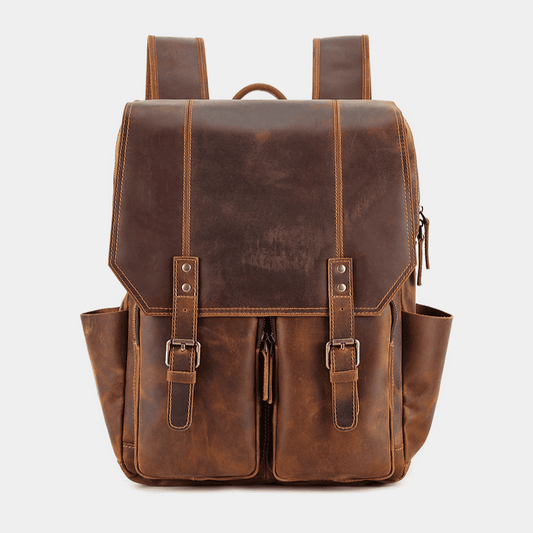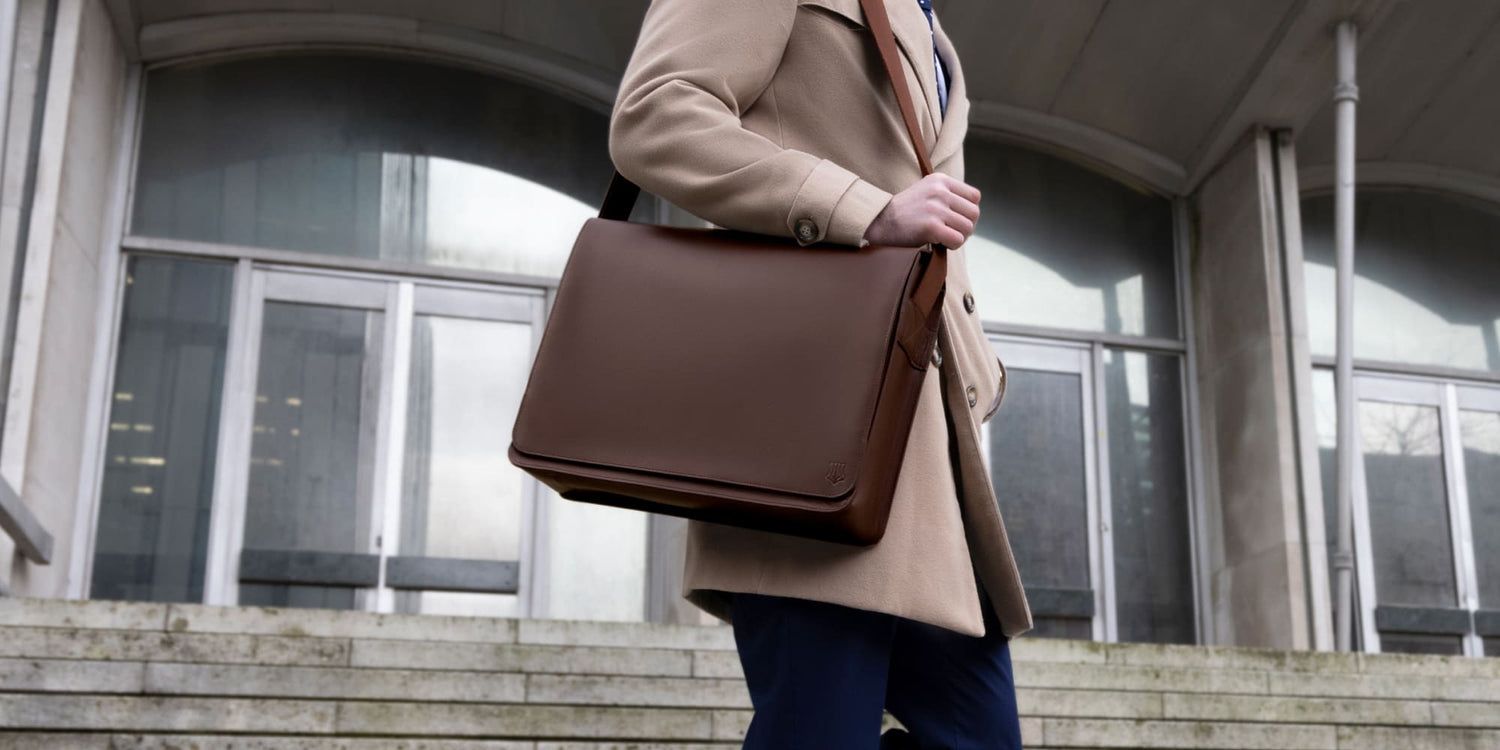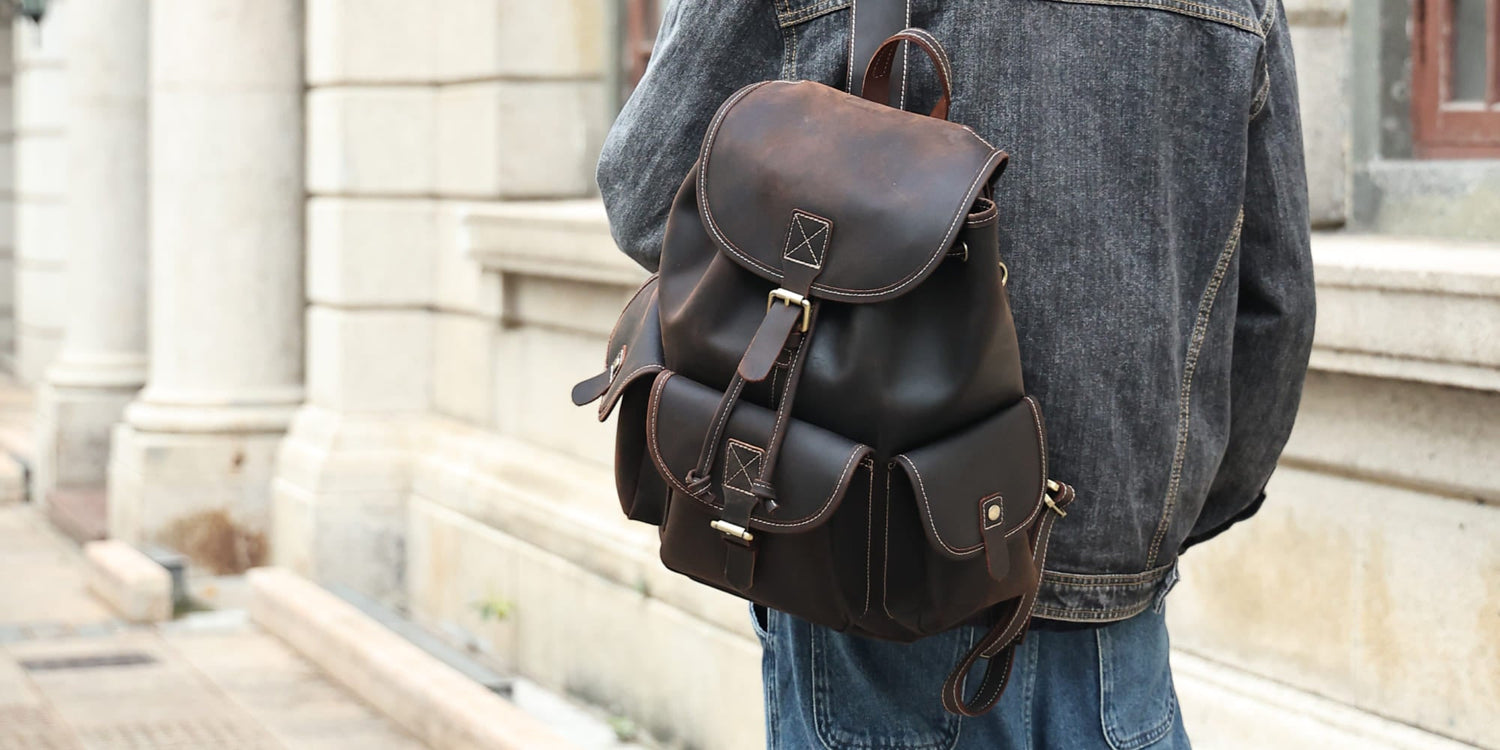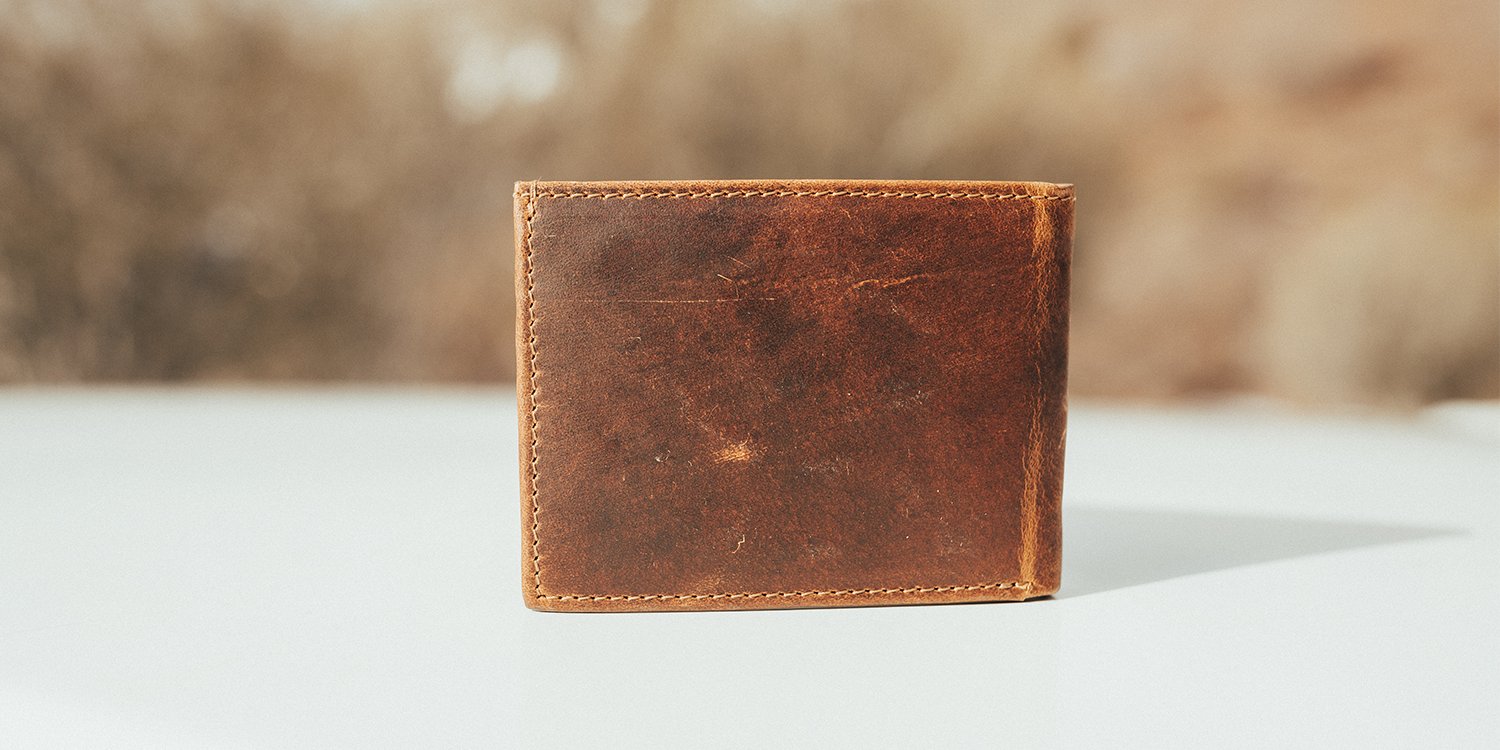Real leather has long been associated with luxury, but now there's a challenger on the scene:
PU leather.
It's the wallet-friendly option, offering a taste of elegance without the premium cost.
Yet, is it truly a match for the timeless appeal of real leather?
Dive into the world of PU leather with us as we weigh the pros and cons.
What is PU Leather?
PU leather, in simple terms, is an artificial leather that is generally used for making shoes, clothing, furniture, and other products.
Also known as polyurethane leather, PU leather is made of thermoplastic polymer, and is completely artificial, and therefore it is classified as vegan, as opposed to its authentic counterpart.
PU leather is commonly known simply as artificial leather, however there are many other names for it, such as bicast leather, synthetic leather, split leather, pleather or reconstituted leather.
While products sold in stores and clothing outlets may have one or many of these names labelled on their products, they all effectively mean the product is made of PU leather, and not real leather.
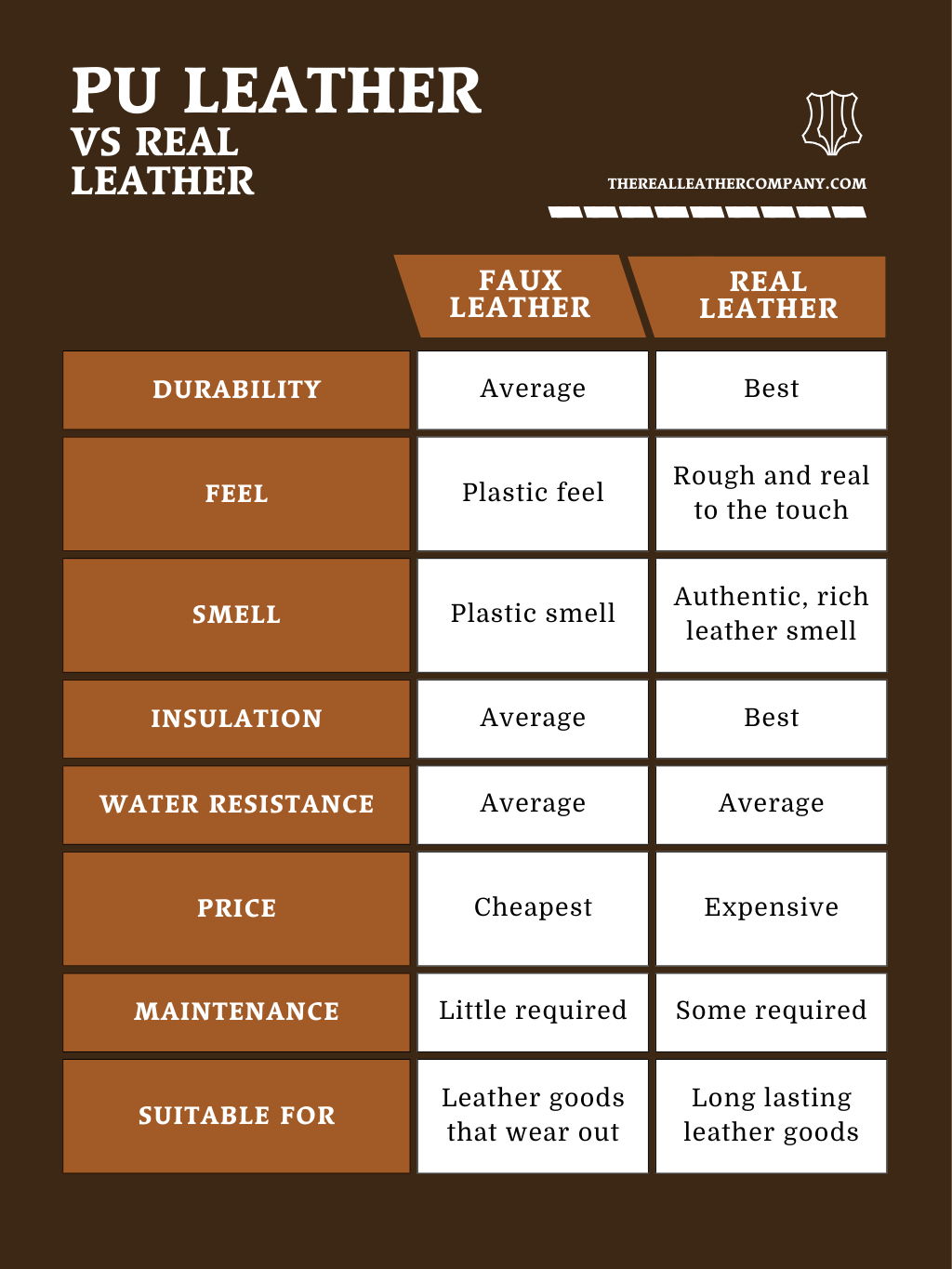
Pros and Cons of PU Leather
There are many pros and cons to PU leather, and every customer will have their own personal preference.
However, there are areas in which the benefits of PU leather can be seen, and alternatively, there are times when it is clear that real leather is a better choice.
Advantages of PU Leather
1. Price
One of the benefits of PU leather is the cheaper price.
PU leather costs less to manufacture, and therefore it is sold for cheaper than real leather.
This is a big incentive to purchase PU leather for customers who are willing to sacrifice a little on quality to save on price.
2. Ease of Clean
Another benefit of PU leather is its inability to absorb water.
This makes PU leather products much easier to clean, and additionally makes it easier to dry these products when they do become wet.
3. Vegan
Arguably the most important pro for PU leather for many customers is the fact that it is vegan-friendly. Vegan leathers like PU leather are growing in popularity.
This means that vegan customers will find it acceptable to purchase products made from PU leather, while they may not want to purchase real leather products.
4. Flexible
Another benefit of PU leather is that it can be manufactured into a variety of colours and styles.
This may add more attraction to PU leather products and make certain items more appealing to consumers.
Disadvantages of PU Leather
1. The Look
One of the most important and visually clear cons of PU leather is that it can often look fake, synthetic, and even tacky.
For customers who want to look good and feel confident in a piece of genuine real leather, the PU alternative is simply not an option.
2. Breathability
Additionally, another disadvantage of PU leather is that unlike real leather, the PU alternative is not breathable.
While a piece of genuine leather will feel light and airy, a product made from PU leather may feel stiff, stuffy, and constricting.
3. The Smell
Another major con of PU leather is the smell it produces. Often after purchasing a product made from PU leather, the customer will find that it has a plastic, or chemical-like smell, and one that can often be difficult to ignore, and in some cases even become overpowering.
This is a stark contrast to the fresh, mild, and pleasant smell that comes from a product that is made from real, authentic leather.
4. Wears Out Easily
In addition to this, PU leather is also known to wear quite easily over time. While some products may not dry out, PU leather can crack, which will make it look unattractive and will put many customers off from wearing it.
This essentially means that PU leather simply does not last as long as real leather, and hence if you are looking for a piece of leather that will withstand the test of time, then real, authentic leather is the right choice for you.
5. The Quality
Similarly, PU leather is simply unable to compete with the quality offered by real leather.
While PU leather can easily tear or puncture, this is almost impossible with real leather.
This is a simple example of the different levels of quality the two types of leather have.
It is clear that there is a huge gap in quality between the safety and reliability of real leather and the flimsy nature of the PU leather.
6. No Patina Development
Another major drawback when it comes to PU leather is the lack of the development of patina over time.
The patina refers to the beautifully weathered, matte look that appears on a piece of real leather after a period of time.
This is a major element of the attractiveness of leather and is something that reflects the hard work and time it takes to produce a beautiful piece of real leather.
This is something that is not seen in PU leather, as it does not develop over time the same way real leather does, and hence it is incredibly difficult for any piece of PU leather to match the beauty and visual appeal of a high-quality piece of natural leather.
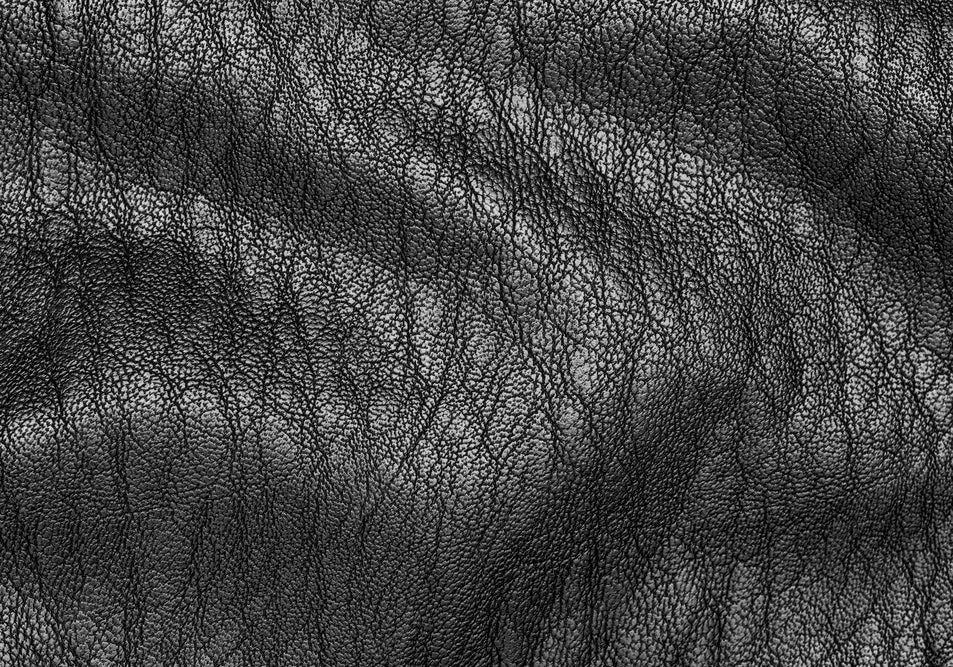
PU Leather vs Genuine Leather
Here at The Real Leather Company, you might not be surprised to find out that we're big fans of real leather.
We do believe that when it comes to choosing between PU leather and real leather, there is only really one winner. Real leather is a much better choice for so many reasons.
In terms of quality, real leather is simply far greater than PU leather. This is true for the highest quality full grain and top grain leathers. But also for lower grades like crazy horse, suede and bonded leathers.
Real leather is more durable, will last longer, and is much better equipped to withstand the test of time. In terms of visual appearance, real leather is also the clear winner.
Over time, real leather develops a patina, or a weathered look that adds greatly to the attractiveness of the leather, while this does not happen with PU leather.
Curious about real leather bags? Check out our collection of real leather messengers, backpacks, duffles and wallets.
PU Leather vs Faux Leather
The main difference between PU leather and faux leather is that PU leather is made entirely of polyurethane plastic, while faux leather is made up of a number of elements.
These include wax, dye, and polyvinyl chloride (referred to as PVC or PVC leather), which, when combined create a fabric that mirrors the premium quality of real leather.
Note that both types of leather are considered to be artificial materials and not an effective substitute for real leather.
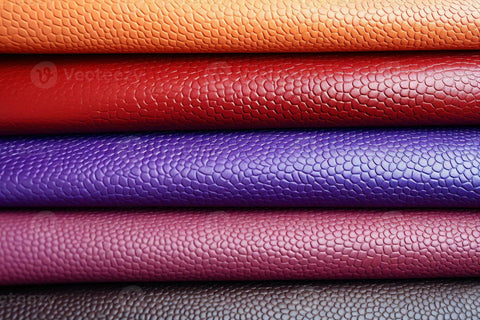
Why we recommend Full Grain and Top Grain Leather
There are many reasons why we recommend customers to go for full grain and top grain leather when shopping for leather bags.
Firstly, full grain leather is highly strong and durable.
This means that when buying a bag made from full grain leather, you are guaranteed that this bag will withstand the test of time.
Additionally, top grain leather has the high-quality, premium appearance that every customer looks for when purchasing a leather bag.
Not only will a full grain leather bag do everything it is designed to do, but it will also look exceptional for years to come.
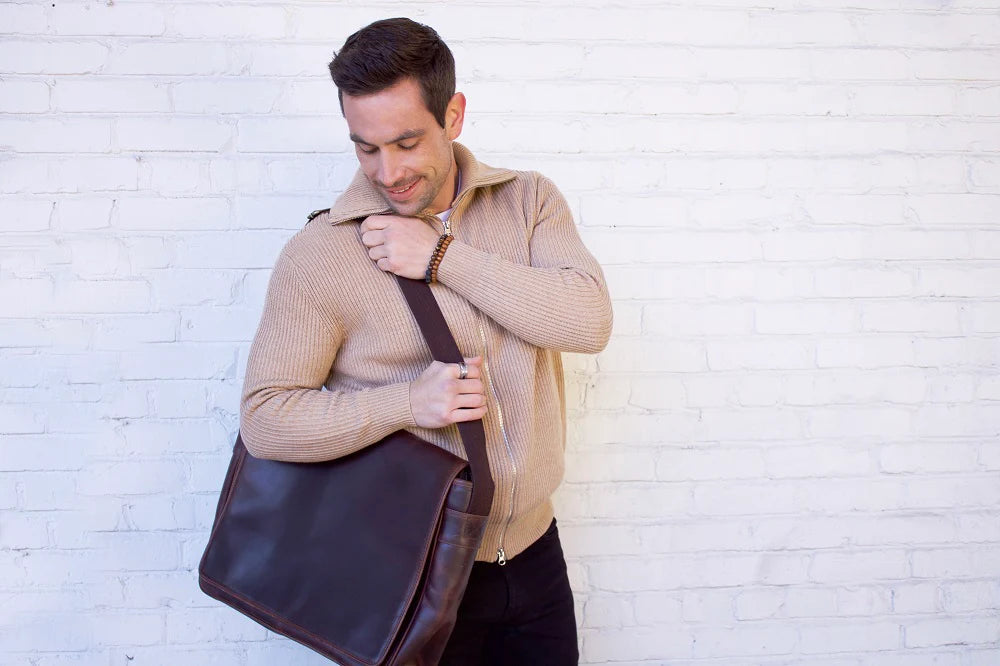
The History of PU Leather
The story of PU leather starts in the mid-20th century.
Scientists were looking for new materials to use instead of real leather.
They wanted something cheaper and easier to make, but still looked like the real thing.
In the 1960s, they came up with PU leather. PU stands for polyurethane, a type of plastic.
They found a way to make it look like leather by coating fabric with this plastic material. It was a breakthrough in the world of fashion and manufacturing.
Many different types of PU leather were developed, but in essence they were all very similar in that a polyurethane coating was applied to a quality base fabric.
But while PU leather became popular for its affordability and versatility, some argue that it can't match the quality and durability of real leather.
Real leather has been used for centuries, dating back to ancient civilizations. It's known for its strength, longevity, and luxurious feel.
Over the years, real leather has been refined and perfected by artisans and craftsmen.
Its natural properties make it highly desirable for high-quality leather goods like bags, shoes, and furniture.
While PU leather has its place in the market as a more affordable alternative, many still prefer the authenticity and prestige of real leather for their most cherished possessions.
How is PU Leather Made?
We’ve already established that PU leather is fake leather that is made to look like the real thing.
But how is it made? Let's break down the manufacturing process.
1. Choosing the Base
First, manufacturers pick a strong fabric like polyester or cotton as the base material.
2. Mixing the Coating
Next, they mix polyurethane (said: paw-lee-your-uh-thane) with colors and bonding agents to make the polyurethane coating.
3. Putting on the Coating
Then, manufacturers spread plastic coating onto the fabric. They use rollers or sprayers to make sure it covers evenly.
4. Sticking and Drying
After spreading, they let it dry and stick to the fabric. This makes the fake leather stronger and flexible.
5. Adding Texture
Manufacturers might press a design onto it to make it look more like real leather.
6. Finishing Touches
Finally, they make it smooth and shiny by buffing, polishing or adding a protective topcoat. This helps it last longer and look better.
That's how PU leather gets made! It's not real leather, but it's made to be strong and look nice, just like the real stuff.
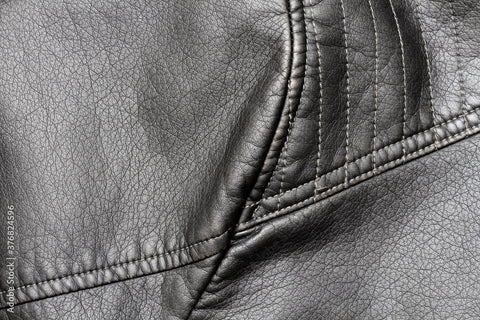
The Environmental Impact of PU Leather
PU leather and real leather both have pros and cons when it comes to the environment.
Real leather comes from animal skins, like cowhide.
It can be argued that leather is a byproduct of the meat industry, so in most cases animals are being killed just for their skin.
In reality, most leather is made from cows that are already processed for the meat.
On the other hand, PU leather is made in a factory with a layer of polyurethane. This is derived from petroleum. Petroleum is not considered to be eco-friendly.
While it doesn't use real animal hides, it does use a lot of chemicals and energy.
While PU leather does not involve animal farming, its production process involves the use of chemicals and energy, contributing to pollution and carbon emissions.
When it comes to durability and sustainability, real leather tends to last longer than PU leather.
That means you might need to replace PU leather items more often, which can create more waste.
In the end, it's hard to say which is better for the planet.
It depends on what you care about most: animal welfare or environmental impact.
Both have their upsides and downsides, so it's important to consider all the factors before making a decision.

How to Care for PU Leather
By following these simple care and maintenance tips, you can help extend the life of your PU leather items and keep them looking their best for years to come.
1. Keep it Clean
Wipe your PU leather items regularly with a soft cloth or sponge dampened with water. This helps remove dust and dirt that can build up over time.
2. Avoid Harsh Chemicals
Stay away from strong cleaning agents or solvents, as they can damage PU leather's surface. Stick to mild soap and water for cleaning.
3. Be Gentle
When cleaning, avoid scrubbing too hard or using abrasive materials. Gentle motions will help preserve the integrity of the PU leather.
4. Dry Thoroughly
After cleaning, make sure to dry your PU leather items thoroughly with a clean, dry cloth. Moisture can cause damage and mold growth if left unchecked.
5. Protect from Sunlight
Avoid exposing your PU leather to direct sunlight for prolonged periods, as this can cause fading and deterioration over time. If possible, store your items in a cool, shaded area.
Uses of PU Leather
While PU leather offers versatility and affordability across a range of products, there is a debate among consumers and enthusiasts about whether real leather provides a superior option for high-quality leather goods.
Each material has its own advantages and considerations, and the choice ultimately depends on personal preferences and priorities.
1. Accessories
PU leather is often used to make stylish accessories like handbags, wallets, and belts. While it may not have the same prestige as actual leather, it offers a similar look at a more affordable price.
2. Furniture Upholstery
Many furniture manufacturers use PU leather for upholstery due to its durability and easy maintenance. However, some argue that real leather furniture provides a higher level of luxury and longevity for high-quality pieces.
3. Automobile Interiors
PU leather is commonly found in car interiors, including seats, steering wheel covers, and dashboard trim. While it offers a sleek appearance and resistance to wear and tear, enthusiasts often prefer the premium feel of genuine leather in luxury vehicles.
4. Footwear
PU leather and other leather alternatives are frequently used in the production of shoes and boots, providing a cost-effective alternative to genuine leather.
While it can mimic the appearance of real leather, some argue that genuine leather offers better breathability and durability, especially in high-end footwear.
5. Decorative Items
PU leather is also used to create decorative items such as photo albums, picture frames, and decorative accents. While these items may look attractive, some may prefer the authenticity and luxury of genuine leather for special keepsakes and heirloom pieces.
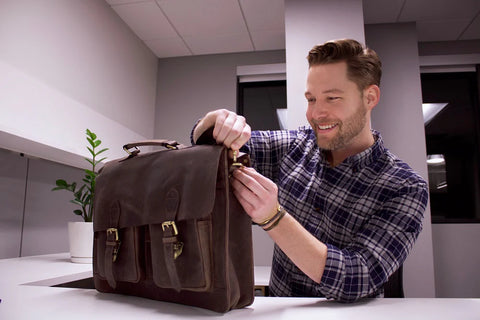
FAQ’s
1. Is PU leather real leather?
No, PU leather is not real leather. It's a synthetic material made to look and feel like genuine leather.
2. Is PU leather waterproof?
PU leather is water-resistant to some extent, but it's not completely waterproof. It can withstand light spills and moisture, but prolonged exposure to water can damage it. We do not recommend excessive water tests of PU leather goods!
3. Is PU leather durable?
While PU leather is durable, it is not be as long-lasting as real leather. Over time, PU leather can show signs of wear and tear, such as peeling or cracking.
4. Is PU leather vegan?
Yes, PU leather is considered vegan because it's made from synthetic materials and doesn't involve the use of animal products.
5. Is PU leather easy to clean?
Yes, PU leather is generally easy to clean with a damp cloth and mild soap. However, it's important to avoid harsh chemicals that can damage the material.
6. Does PU leather peel?
Yes, PU leather can peel over time, especially if it's exposed to excessive heat or friction. This is one of the drawbacks compared to real leather, which tends to age more gracefully.
7. Is PU leather breathable?
No, PU leather is not as breathable as real leather. It may trap heat and moisture, leading to discomfort, especially in warmer climates.
